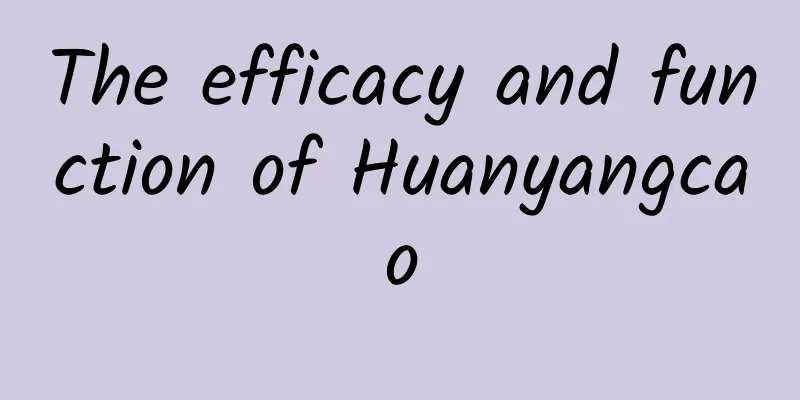The efficacy and function of Boxwood

|
Many people are not very clear about spoon-leaf boxwood, so when choosing spoon-leaf boxwood, you need to understand it so that you can feel at ease when eating it, which is beneficial for disease treatment. [Alias] Stone boxwood, evergreen. [Source] Medicinal material source: the roots, leaves or flowers of Buxus japonicus, a plant of the Buxaceae family. [Original form] Boxwood shrub, 3-4m tall. The branches are cylindrical, the twigs are quadrangular, covered with short soft hairs, which later become glabrous. The leaves are thin leathery, and the petiole is 1-2mm long; the leaf blades are usually spoon-shaped, and there are also narrow ovate or obovate. Most of them are widest above the middle, 2-4cm long and 8-18mm wide, with rounded or obtuse tips, often with shallow notches or small pointed convex heads, and narrow and cuneate bases. The leaf surface is green and shiny, the back of the leaf is pale gray, the midrib is convex on both sides, and there are many lateral veins. The capitula is axillary, 5-6mm long, with dense flowers and the inflorescence axis about 2.5mm long; there are about 10 male flowers, with pedicels 0.4mm long, sepals ovate, about 2.5mm long, and sterile pistils with columnar stalks and swollen ends; the outer sepals of female flowers are about 2mm long, the inner sepals are about 2.5mm long, the ovary is 2mm long during pollination, the style is 1.5mm long, slightly flat, and the stigma is obcordate, extending down to 1/3-1/2 of the style. The capsule is ovate, 5mm long, with a persistent style erect, 3-4mm long. The flowering period is February, and the fruiting period is May-August. [Habitat distribution] Ecological environment: Growing on plains or under forests on hillsides at an altitude of 400-2700m. [Properties] Identification: The leaves of this product are mostly wrinkled and thin leathery. Complete leaves are usually spoon-shaped, but can also be narrowly ovate or obovate. Most are widest above the middle, 2-4 cm long and 8-18 mm wide, with a rounded or obtuse tip, often with a shallow notch or a small pointed convex head, and a narrow cuneate base, sometimes acute. The leaf surface is green and shiny, the back is pale gray, the midrib is convex on both sides, there are many lateral veins, and most of the lower half of the midrib is covered with fine hairs. The petiole is 1-2mm long. Crisp texture. In some cases, axillary capitulum inflorescences can be seen, with the inflorescence axis about 2.5 mm long. It has a faint smell and a bitter taste. 【Nature and flavor】 Bitter; sweet; cool 【Functions and indications】Relieve cough; stop bleeding; clear away heat and detoxify. Mainly used for cough, hemoptysis, sores and swelling [Usage and Dosage] For oral use: decocted in water, 9-15g. For external use: take appropriate amount and mash it for application. 【Excerpt】 Chinese Materia Medica Having said so much, we can see that spoon-leaved boxwood has many uses. It can also be used as medicine to treat diseases. You might as well know more about these, it will be helpful in your life. |
<<: The efficacy and function of spoon grass
>>: The efficacy and function of lantern fruit
Recommend
The efficacy and function of Ginger
Ginger is commonly used as a medicinal ingredient...
National Cancer Prevention and Control Week丨Is it a big deal if lung nodules are detected during a physical examination?
"Nodules", "polyps", "cy...
Often stay up late, and your ears suddenly become deaf? If you have these bad habits, change them quickly
As the saying goes If you don't work hard tod...
How to make soup with Chinese medicine Dendrobium
Dendrobium is a very precious traditional Chinese...
The efficacy and function of Epiphyllum stems
As people's research on traditional Chinese m...
"Ask about suicide again" has blossomed! It's better to make money from it than to seek happiness from it
In this age of advanced internet, we can ask any ...
The efficacy and function of multi-flowered octagonal lotus
The multi-flowered octagonal lotus is a very fami...
The efficacy and function of fried gorgon fruit with bran
In layman's terms, fried water chestnut with ...
What are the effects, functions and consumption methods of Astragalus powder?
Astragalus is a plant that is commonly eaten by o...
Female star's possession of e-cigarettes has aroused concern! E-cigarettes are not a "safe haven" and their harm cannot be underestimated →
Recently, the incident of "a female star hid...
"Now I am Death": The True Life of Oppenheimer
Oppenheimer oversees the final assembly of "...
Will drinking ice water often hurt your stomach? Will drinking hot water be fine?
Reviewer of this article: Chen Haixu, Deputy Dire...
The efficacy and function of clam begonia
We know that there are many kinds of Chinese medi...
Ministry of Culture and Tourism: 79.61 million domestic tourists traveled during the Dragon Boat Festival holiday in 2022, and domestic tourism revenue reached 25.82 billion yuan
According to calculations by the Ministry of Cult...
The efficacy and function of Yantuo
After thousands of years of sedimentation and acc...









